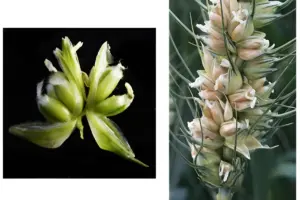
The wine industry is witnessing a significant shift as winemakers respond to growing consumer interest in lower-calorie and lower-alcohol options. This trend, reminiscent of the light beer boom in the 1970s, is changing the landscape of wine offerings. As consumers seek healthier choices, brands are adapting their products to meet these demands, prominently featuring calorie counts on their labels.
Historically, the introduction of light beer began with Gablingers Extra Light Beer, developed by a Swiss chemist in the 1960s. This innovation led to a series of commercial attempts, ultimately culminating in Miller Brewing Co. acquiring the rights and marketing the first “lite beer.” Today, approximately 40% of the U.S. beer market comprises light beers. With wine sales potentially following a similar trajectory, the success of lower-calorie wines remains to be seen.
Recently, several lower-alcohol and lower-calorie wines were sampled, revealing a range of palatable options. For context, a standard glass of table wine contains about 150 calories per 5-ounce serving.
One standout was the Yalumba Y Series Lighter Chardonnay from South Australia 2024, priced at $15. With only 66 calories per glass, this ultra-low calorie wine offers light fruity notes and a refreshing citrus edge, making it ideal for warm outdoor settings.
Another notable option is the Liquid Light Sauvignon Blanc from Washington State 2023, retailing between $13 and $16. This wine boasts 12.5% alcohol and just 95 calories, delivering a crisp profile with classic herbal and citrus characteristics.
The Italian wine producer Mezzacorona has also entered the lower-calorie market with its new brand, Ventessa, which features wines with 9% alcohol and 90 calories. The Mezzacorona Ventessa Vignetti Delle Dolomiti IGT Pinot Grigio 2023, priced at $10 to $13, presents a pleasant fruity profile with pear and citrus notes, making it difficult to discern its lower calorie content.
The Mezzacorona Ventessa Pinot Grigio Rosé for 2024, similarly priced, showcases a light refreshing style with pale hues and hints of cherry. Additionally, the Ventessa Red Blend, crafted from indigenous grapes schiava and teroldego, offers a summer-friendly drinking experience with light acidity and berry notes.
Renowned for its quality, Rodney Strong wines consistently impress. The Rodney Strong Sauvignon Blanc Charlottes Home Sonoma County 2023 is priced at $18 and highlights the grape’s potential with a blend of lime, herbs, and peach notes, complemented by zippy acidity. The Rodney Strong Chardonnay Russian River Valley 2023 Limited, retailing for $37, showcases lemon and toasty aromas with a pear finish.
The Rodney Strong Pinot Noir Russian River Valley Sonoma County Limited 2023 offers a complex profile of blackberry, blueberry, and cherry with a fair price of $37. Meanwhile, the Rodney Strong Cabernet Sauvignon Knights Valley Sonoma County Limited 2022 is robust, featuring cherry, cassis, and berry flavors, also priced at $37.
Champagne producers are also embracing this trend. Champagne Piaff, led by fifth-generation winemaker Maxime Mansard, offers impressive products in the $50 to $60 range. The Champagne Piaff Brut N/V features a creamy, yeasty nose with ripe apple notes, while the Champagne Piaff Rosé Brut N/V displays a beautiful strawberry color, both offering a delightful tasting experience.
For those exploring distinctive options, the Quinta da Fonte Souto Florao Branco 2024 from the Alentejano region of southern Portugal is priced at $23. This white blend of arinto and verdelho grapes is fresh and floral, aged in stainless-steel vessels to preserve its acidity.
Another noteworthy selection is the Buscado Vivo o Muerto La Verdad San Pablo Chardonnay 2019, priced at $50. This Argentinian chardonnay is characterized by fresh and tart citrus and mineral flavors.
Tom Marquardt and Patrick Darr, seasoned wine columnists since 1985, continue to provide insights into the evolving wine landscape. Their reviews highlight the increasing significance of lower-calorie options as consumers seek healthier choices without sacrificing flavor. For further updates, readers can visit their blog at moreaboutwine.com or reach out via email at [email protected].






